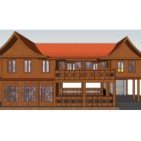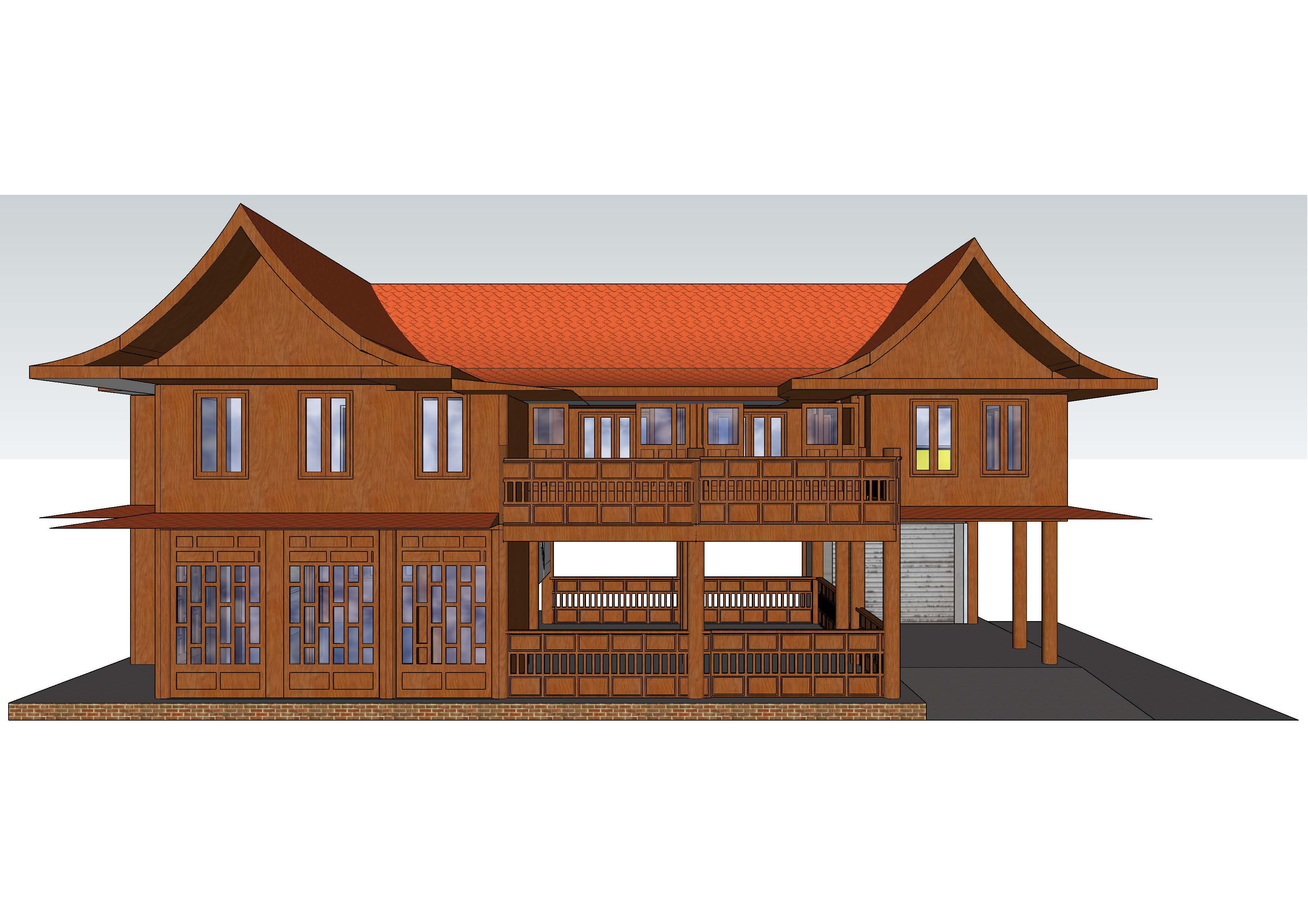-
Posts
205 -
Joined
-
Last visited
Content Type
Events
Forums
Downloads
Quizzes
Gallery
Blogs
Everything posted by Dr B
-

Cambodia Slams Thailand Over Border Curbs Amid Growing Tensions
Dr B replied to geovalin's topic in Cambodia News
NOTE A Thai soldier shot and killed a Cambodiam soldier. Cambodia did NOT!!!!! Cambodia did formally ask for an investigation and report by the Thai authorities, but nothing appears to have been done. -

Entertainment Thailand's Tourism Set for a Boost with Jurassic Film Release
Dr B replied to snoop1130's topic in Thailand News
Can you even point to Krabi, Phangnga or Trang on a map, becasue you certainly haven't been there? -

Report Dutch Expat Arrested in Phuket for Alleged Fraud in Crime Crackdown
Dr B replied to snoop1130's topic in Phuket News
Exactly. If it hadn't been for the "crackdown", which will last for 7 days, and the tip-off, nothing would have happened. Isn't that something that the "media" ought to be highlighting? -
I have had recent experience of sending a parcel to Austria. The tracking worked all the way, and showed that it went from Bangkok on Finnair via Helsinki, then into the EU in Ireland. The codes like GBDOH and GBCVTA are called ITMATT codes, but it is very hard to find what they mean. From Ireland our parcel was returned to Thailand without any reason. We are still trying to get the IPC to explain, two months after the event. We then sent the parcel again, and it was again tracked to Helsinki, and then to Vienna. It then sat in customs in Vienna for over a week. The parcel contained a quilted body warmer and liner left behind by a visitor. She has finally received the parcel but been charged storage by Austrian Customs. The Customs Label, CN22, was quite clear on the contents. We have since sent a parcel to Australia, and it has been tracked as far as "Departure from Suvarnabhumi to Sydney" since Friday 6 June, so is presumably waiting for a flight. I used the Thailand Post Tracking Number on the Australia Post website and it worked fine, but gave exactly the same message. So tracking works all the way to destination, and can be followed from home PO or destination PO. There are many opportunities fior delay in transit.
-

Economy Thailand Approaches Debt Ceiling Amid Economic Concerns
Dr B replied to webfact's topic in Thailand News
Simple solution. Cut the commission, 20 to 30% I expect, from all Government expenditure budgets in every Ministry. There will suddenly be an excess, which could be used to help the less well off in Thailand. Will it happen? Never, not even thought about. -

Economy Thailand Approaches Debt Ceiling Amid Economic Concerns
Dr B replied to webfact's topic in Thailand News
I presume that it is significant that it is the Opposition that is raising this issue. There is a statement that tax revenue will fall short of predictions by at least Bt 33 billion this year. However, only yesterday, Suriya Jungrungreangkit, the Transport Minister, was touting all the projects he was going to authorise. It was hard to join the figures together, but there was a budget of over Bt 212 billion for this year, and future porjects identified at Bt 373 billion, along with a statement that funds were "readily available. He is only interested in his commission, with no concerns over the revebue shortfall, and his commission on its own would more than cover it. Sickening. -

Politics Thaksin Wants Pheu Thai Back in Control of Interior Ministry
Dr B replied to webfact's topic in Thailand News
Just very poor reporting, probably lost in translation. https://www.thaiexaminer.com/thai-news-foreigners/2023/09/01/thaksin-eight-year-sentence-commuted-to-one-king-maha-vajiralongkorn-royal-gazette/ -

Politics Thaksin Wants Pheu Thai Back in Control of Interior Ministry
Dr B replied to webfact's topic in Thailand News
I am sorry but your post is factually incorrect, despite the fact that it was written into news articles by both the Thaiger and AN on numerous occasions. Thaksin was never pardoned, and is a convicted felon. His sentence was "commuted", which is not a pardon. The King reduced his sentence from 8 years to 1, and I am not aware from the news of any links between the King and what happened to the 1. -

Politics Thai PM Paetongtarn Faces Dilemma Over Compensation Order
Dr B replied to webfact's topic in Thailand News
Wealthy families sending their children to one of the many international schools in Thailand is one thing. A Prime Minister sending a 4 year old and a 2 year old to be educated in England is quite another. It certainly seems that the Prime Minister has significant misconceptions with regard to truth. With regard to her father's infamous stay in the Police Hospital, she was quoted at the time as saying that he had a shoulder operation. A few weeks ago, in reposnse to the Medical Council annoucements, she suddenly came up with "he had Covid"! Now we have a visit paid for by the Government to promote food trade and soft power, maybe also promoting an F1 event in Thailand, but really to do with her children's education. -

Accident Rama 2 Strikes Again! Falling Concrete Smashes Woman’s Car Window
Dr B replied to webfact's topic in Bangkok News
It is not easy to judge from a single photograph, but the second picture, which seems to be of the fragment that fell, appears to be old concrete. The larger pieces that fell a few weeks ago, and ended up killing the driver through intenral injuries, were also old concrete. This needs to be very carefully investigated, since pieces falling from an older structure is very different from things falling while under construction, and the opportunities for further pieces to fall is enormous. -

Crime Australian Man Detained for Carrying Grenade Rounds at Phuket Airport
Dr B replied to webfact's topic in Phuket News
Where was he supposed to "declare them"? In case you hadn't noticed, as many other responders had not, he was booked on a domestic flight, carrying a few pieces of scrap metal. -

Politics PM Shinawatra Addresses Thaksin's Hospitalisation Controversy
Dr B replied to snoop1130's topic in Thailand News
The word salad prodcued by The Thaiger and AseanNow is absolutely appalling. Prime Minister Paetongtarn Shinawatra addressed ongoing concerns regarding former Prime Minister Thaksin Shinawatra's extended stay at the Police General Hospital, where he has been hospitalised on the 14th floor since returning to Thailand. Speaking to the press on Tuesday, That clealry suggests that he is still in hospital, and is a cut and paste from a time when he still was. When questioned about any possible foreknowledge of Thaksin's medical condition, the Prime Minister remarked, "If I told you the truth, would you believe me?" She confirmed, however, that Thaksin is indeed unwell and recently underwent surgery. That is another cut and paste from when he was in hospital, and had indeed undergone some minor surgery, something to do with a shoulder I seem to remember. The discourse comes amidst impending legal proceedings where the Supreme Court’s Criminal Division for Political Office Holders has summoned Thaksin to testify on June 13. That is the only bit of up to date news, and tells us nothing. -
There are very few facts, so I will make up a story which I think fits the available facts very well. 1 Young Ukrainian woman arrives in Phuket for a 1 year stay. 2 She finds a suitable apartment and pays a Bt 32,000 deposit and Bt 32,000 monthly rent in advance. 3 She stays for a year, keeps the place well and passes all routine inspections, and pays her rent on time. 4 Her year is up and she is planning her move to somewhere other than Thailand. 5 She lets this be known casually to the landlady/agent, e.g. as the reason she is not extending the lease. 6 She asks for her deposit back, but the landlady/agent make it clear that is not going to happen. 7 She feels very annoyed and "swindled", and has no time for legal recourse. 8 She knows she is losing her money, but doesn't want the landlady/agent to pocket it. 9 The deposit was to cover any damage that needed to be repaired when she left, so she does some damage. 10 She feels partially redressed, and the "damage", a mattress, some curtains and pillows, a coat of paint and some cleaning up, will not leave a lot of change out of Bt 32,000. 11 The landlady/agent show themselves up as swindlers by suggesting the damage is Bt 350,000, a multiplication of at least 10. I would say to the landlady/agent som nam na. Try teating people the way you would like to be treated.
-

Travel Weak Baht Offers Pattaya Tourism Potential Boost Amid Low Season
Dr B replied to snoop1130's topic in Pattaya News
0.18 Baht in 33 is 0.5%. Sure that's going to make a huge difference to incoming tourists. -

Report Substandard Rebar Found in Collapsed Bangkok Building's Construction
Dr B replied to snoop1130's topic in Bangkok News
Not really relevant here, but the Florida condo collapse information had something vital missing. It was stated that there should have been beams connecting the tops of the columns and supporting the slabs, and these were not built. However there is no load shown on the pool deck in the video graphics, so no explanation as to why the columns should punch through. -

Report Substandard Rebar Found in Collapsed Bangkok Building's Construction
Dr B replied to snoop1130's topic in Bangkok News
Understood, but he clearlu shows that the visible parts of the upper floors of the core were moving down en masse. This tells me that the failure is occurring from the very bottom. If you compare the whole building collpase with a controlled demolition, you will see amazing similarity. I have given a loner explanation but it was described as a diatribe so I won't repeat it. -

Report Substandard Rebar Found in Collapsed Bangkok Building's Construction
Dr B replied to snoop1130's topic in Bangkok News
What arrant nonsense. How do you think the Burj Khalifa is built? -

Report Substandard Rebar Found in Collapsed Bangkok Building's Construction
Dr B replied to snoop1130's topic in Bangkok News
I watched it through, and it is interesting, but the guy is not the right sort of engineer and misses several key points. -

Report Substandard Rebar Found in Collapsed Bangkok Building's Construction
Dr B replied to snoop1130's topic in Bangkok News
Depends what you mean by "ultimately". No building ever actually fell down becasue of corruption, and many buildings where corruption was involved are still standing. The main Thai levels of corruption are through the Government and bureaucratic channels, where the corruption "commission" is paid oave rand above the actual price for the purchase, out of Government funds i.e. taxpayers money. Buildings fall down for techncial reasons, and noting that some samples fail to meet the requirements of a prescribed standard is not a technical reason, unless it is also shown that the stress on the bar exceeded that test value. Corruption may be the excuse for a technical failure, but it doesn't make buildings collapse. -

In Defense of the Indefensible: Pete Hegseth and the Mirror of Our Moment
Dr B replied to Social Media's topic in World News
There is none so blind as he who will not see, nor none so deaf as he who will not hear. -

Report Thailand Targets High-Risk Sectors in Nominee Business Crackdown
Dr B replied to snoop1130's topic in Thailand News
I wonder what they are supposed to be looking for in these inspections? My experience with a Thai company was over 30 years ago, but we were reequired to have a minimum of 7 shareholders. The > 50% of the shares had to be owned by Thais. If we take China Railway Company No 10 (THailand) as an example, as reported the three Thais had 51% of the shares, so met the law. Shareholders do not run companies, and have no say in the running of a company, other than by kicking out the Board of Directors and installing another. They are run by the Boards of Directors, who don't need to be shareholders. Shareholders get a dividend/share of the profits, but that can be arranged to be very small, e.g. by paying the Directors a lot. -

Transport Double-Deckers Banned from Risky Roads After Tragic Crash
Dr B replied to webfact's topic in Thailand News
If you take the time to remember or read back about the original accident, I do not think you will find anything there that linked the casue of the accident to the bus being a double decker. This is just a Minister who knows nothing about transport thinking he must make some expansive public statement. -

Report Staggering 80% of Thai Army Conscripts Battling Drug Addiction
Dr B replied to webfact's topic in Thailand News
My guess is that the 80% addiction has nothing to do with hard drugs such as Yaba, Crustal Meth, etc. It is all about kratom, which is widely available in the rural areas, openly sold at the road side in bottles, and can become seriously addictive. -

Crime Brit Caught with Cocaine Stash While Overstaying Visa on Samui
Dr B replied to webfact's topic in Koh Samui News
Maybe he just stayed at school longh enough to be able to work out that 1.8/3 = 0.6, but then I am a rocket scientist. -

Crime Brit Caught with Cocaine Stash While Overstaying Visa on Samui
Dr B replied to webfact's topic in Koh Samui News
I think there is one other major factor that you have missed Richard, and that is language. Most of the reports of British bad behaviour, whether in the media or social media, can be derived in the English language and they are what searching in English will find. Media and social media reports in Chinese, Russian, German, Italian, Swedish of Hindi are much less likely to catch the eye of the ThaiTiger and AN searchers are they not?








